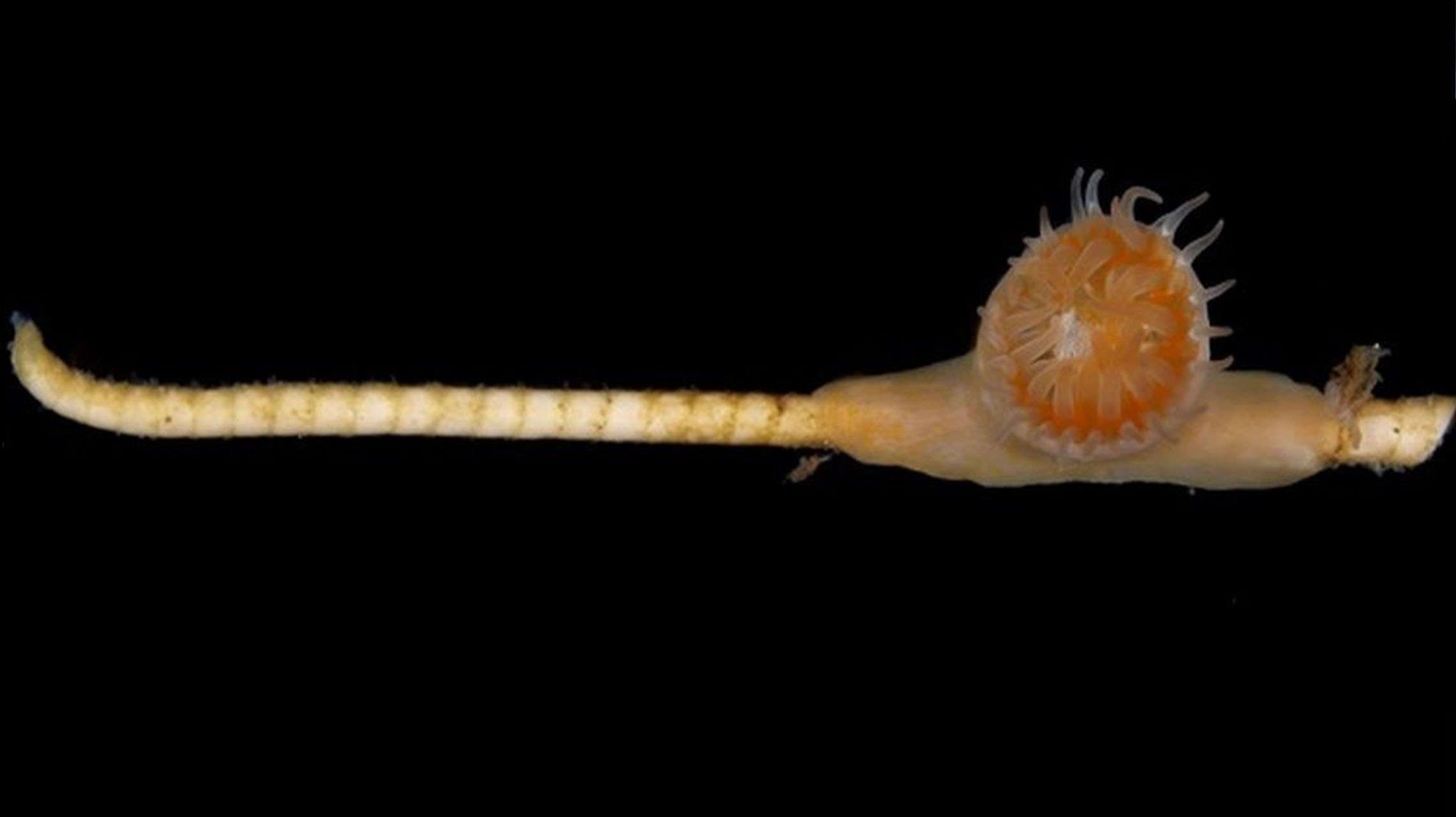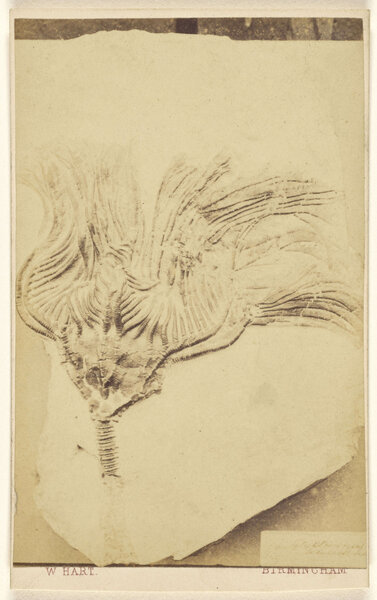Create a free profile to get unlimited access to exclusive videos, sweepstakes, and more!
Lovecraftian living fossils were thought to be extinct for 273 million years…until now

Of all the eldritch things that lurk at the bottom of the sea, crinoids, many of which appear to be submerged lilies from an alien world, have to be some of the weirdest. They only get weirder if they have many-tentacled corals sticking to them.
These creatures only sound fictional. Some 273 million years ago, any evidence of a symbiotic relationship between Metacrinus rotundus crinoids and non-skeletal coral species Abyssoanthus and Metridioidea hexacorals vanished from the fossil record. Now they have resurfaced out of nowhere (unless some intervention with the Great Old Ones was involved) — and not as fossils. These life-forms still exist in symbiosis (shown above), with the hexacoral catching an easy meal from whatever might come the crinoid’s way as it sways back and forth.
The corals and crinoids had never been seen together until Geologist Mikolaj Zapalski of the University of Warsaw, who led a study recently published in Palaeogeography, Palaeoclimatology and Palaeoecology, and his research team found them off the coast of Japan. The symbiotic relationship of a species who were thought to have broken up hundreds of millions of years ago has suddenly reemerged.
“In Palaeozoic rocks older than 273 million years, we have found large numbers of fossil crinoids on which skeletons of corals are found,” Zapalski told SYFY WIRE in an interview. “We inferred the symbiotic relationship in these fossils based upon modifications of correct anatomy of both crinoid and coral, which evidence that they were living and growing together.”
After these species of symbiotic crinoids and corals disappeared from the fossil record, other species continued to live and eat together in prehistoric oceans. It seems that corals with no colony or bony structures had found the ultimate food source. By latching onto crinoids, especially at the base of what looks like a blossom that feeds off microorgamisms floating in the deep, which has earned them the name “sea lilies.” Otherwise sessile corals had access to everything that the crinoid’s “petals” would feed on, which could mean there was competition between them. Zapalski believes that the corals may take advantage of the opportunity to snap up food before the crinoid can.
“It is mostly beneficial for the coral — being attached to a crinoid stalk above the seafloor gives much more exposure to currents that bring food,” he said. “The crinoid's food stream was therefore reduced, so it was and is symbiosis in terms of ‘living together’, but in fact, the interaction is rather competitive.”
Evidence of symbiosis between the crinoids and corals of these particular species might have only seemed to vanish from the fossil record. Crinoids have skeletons on the outside. Though soft-bodied organisms can leave impressions on sediment that is later fossilized, the creatures themselves do not fossilize too well, and even specimens of impressions are rare. It could be that Metacrinus rotundus crinoids still lived syn vivo with the soft corals after they were thought to have ended the relationship, but the corals had not left behind enough of their remains. This explains why there is no fossil record for Abyssoanthus and other zoantharia (soft tentacled invertebrates that are literal “animal-flowers” like their name suggests).
The fossilized coral-crinoid duos that have survived always involve a coral with some sort of bony formation that has been preserved through the eons, and there was another thing about this relationship that differed from the Paleozoic crinoids and corals of the same species. Zapalski used non-invasive methods like microtomogrophy and stereoscopic microscopy to see the insides of their specimens. The fossils showed that each animal had changed the other’s body structure so they could get the most out of each other. Ancient corals would modify the crinoids’ skeletons, while the extant specimens studied had apparently not affected each other in that way.
What Zapalski and his colleagues found is proof that science can move forward by looking back.
“Our discovery helps us to understand past relationships between marine animals by giving us something like a snapshot [to] see marine symbioses in the Palaeozoic,” he said. “It also shows that some symbioses are either very conservative, or can evolve again in various groups of organisms.”
If only H.P. Lovecraft knew these existed, even more alien species may have spawned from the depths of his imagination.



























